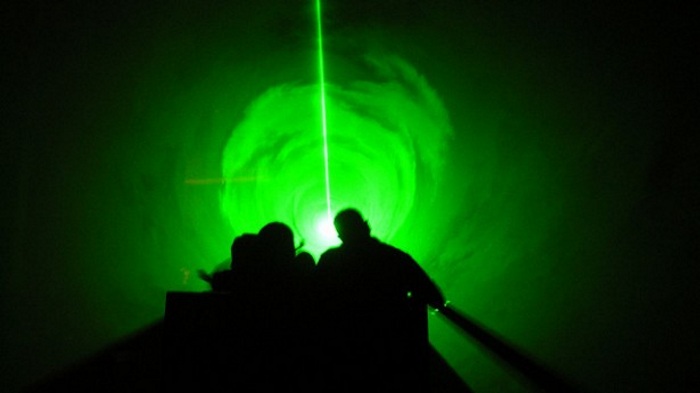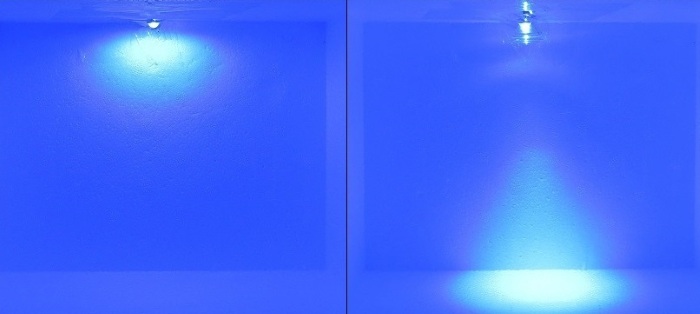In the July 2014 issue of the journal Optica , researchers from the University of Maryland (UMD) report using an “air waveguide” to enhance light signals from distant sources. Should this development prove reliable, the technology could come to have a major impact on several different applications, including long-range laser communications, pollution detection, laser weaponry, and more.

The study, which was led by Howard Milchberg, professor of physics and electrical and computing engineering, addresses one of the major issues cable and fiber optic providers face today—that light loses its intensity with distance.

The reason why this happens is typically due to the natural spreading tendencies of light beams in general; sometimes, though, it could also be a result of interactions with gases in the air. Fiber optic providers have tried to overcome this issue with cables that are intricately designed so as to guide the light beams and maintain their focus from point A to point B. This is accomplished vis-à-vis a transparent glass core surrounded by a cladding material with a lower index of refraction so that when the light tries to leave the core, it gets reflected back inward.

Now, while this solution works fairly well, the problem with the cables is the fact that they can handle only so much power. Additionally, they need actual, physical support wherever they need to go. The next step for the industry is a solution that not only can handle more power, but one that can be used anywhere, and with minimal support. Milchberg and his team believe they’ve developed the ultimate solution, and they were able to do this using only air.
The UMD’s approach uses air-based waveguides, which consist of a “wall” of low-density air surrounding a core of higher density air. When a laser signal was shot from point A and reached point B, it proved 1.5 times stronger than one shot sans waveguide. This might not seem like much, but over distances 100 times longer, where the strength of an unguided signal would be significantly reduced, the signal enhancement via the waveguide could be that much greater.
Diving into the specifics, Milchberg details in the paper how he and his team broke down the air with a laser to create a spark. An air waveguide conducted light from the spark to a detector about one meter away, and the group determined this captured signal was strong enough to be used for the purpose of analyzing the chemical composition of the air that produced the spark.
But how was a waveguide even created? Simple — by using short, powerful laser pulses. You see, as the pulse pass through the air, it collapses into a narrow beam called a filament. The pulse does this because the laser light increases the refractive index of the air in the center of the beam, causing it to stretch out.

In a previous report, Milchberg showed that these filaments actually heat up the air as they pass through. This causes the air to expand which, in turn, leaves behind a “hole” of low-density air in the pulse’s wake; a hole which has a lower refractive index than the air around it (similar to the aforementioned refractive properties you find in today’s fiber optic cables).
Now, while the filament is short lived (less than a trillionth-of-a-second), it take a billion times longer for the hole to appear. Milchberg found that if four filaments were fired at the same time in a square arrangement, the resulting holes form the low-density wall needed to create a waveguide. And when a more powerful beam was fired between these holes, it lost hardly any energy.
More importantly, though, the “pipe” produced by the filaments lasted a few milliseconds, or about one million times longer than the laser pulse itself; that said, Milchberg believes a single waveguide could be used to send out a laser and collect a signal where fiber optical cables cannot: “It's like you could just take a physical optical fiber and unreel it at the speed of light, put it next to this thing that you want to measure remotely, and then have the signal come all the way back to where you are,” he said.
The UMD researchers have a long road ahead though: Milchberg and team need to show that these waveguides can be used over much longer distance — 50 meters at least, before real-life scenarios can begin to be planned out. Should they prove reliable at this distance, though, the possibilities for the technology are truly endless, as it could be used to conduct chemical analyses of everything from nuclear reactors to air quality in the upper atmosphere; waveguides could also be set up to allow laser light to make high-resolution topographic maps, create more sophisticated laser weaponry, and more.
Story via cmns.umd.edu
Advertisement
Learn more about Electronic Products Magazine





